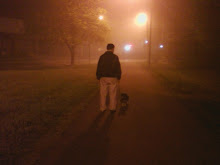Sermon preached December 2, 2012
Play beginning of Buffalo Springfield, “Expecting To Fly”
Expecting To Fly
Now that’s a strange way to begin Advent. Were you expecting something else? Maybe you’ve come to expect the unexpected sometimes here?
Are you expecting? That is a question in which context is everything. If your postal delivery person asks it of you, it would be considered a courtesy. If you ask it of a woman of child-bearing years – well, don’t do that.
Of course, the typical context for “Are you expecting?” has to do with pregnancy. Are you expecting a child? One of the things parents do when they are expecting a child is that they learn. What is this going to mean? What should we be doing? The number of books for expectant parents is amazing. I did a little on-line research and one of the sites I found – pregnancy.baby-gaga had a list of forty great pregnancy books. Forty great pregnancy books! They listed them out by the forty weeks of pregnancy from week one: Taking Charge of Your Fertility, to week forty: Baby Signs. In between were such books as Frankly Pregnant, What’s Going On In There?, and The Expectant Father. Forty books!
Then he told them a parable: “Look at the fig tree and all the trees; as soon as they sprout leaves you can see for yourselves and know that summer is already near. So also when you see these things taking place, you will know that the kingdom of God is near. (Luke 21:29-31)
I am told that fig trees are rather unique. When there are no leaves, their bare spiky branches give the tree an appearance of being “utterly dead.” The budding leaves allows those paying attention to watch as sap returns to the tree. It can be observed with particular clarity. (Jeremias, The Parables of Jesus, 120) It is as if the tree is moving from death to life.
This parable of the fig tree is a parable about learning. One of the things expectant parents tend to do is learn. They may not read forty books in forty weeks. They may not read much at all, but then they may learn from classes, or from parents about what it will mean to have this baby in their lives. Such learning happens most vigorously when a first child is expected, but it doesn’t end when more children come. What’s it going to be like when you have two babies in the home? One of the stories we tell at our household is the story of bringing Beth home from the hospital. David, our oldest, was about twenty-months old, and when we brought this little baby home to be part of our family, he sat there and cried. We were learning about having two infant children.
Expectant parents learn. Followers of Jesus, disciples of Jesus, learn. Our journey of faith is a journey of learning, or is intended to be anyway. We think parenting involves learning. Many professions require evidence of continued learning – CEUs. Why do we sometimes assume that our journey of faith is different? God’s love may be unchanging, but I would argue that it is only so in a particular way. God’s love may be unchanging, but our lives change. Our world changes. What love requires of us can change. Prayer can change. I think there is a difference in thinking about prayer disciplines in an age of almost constant communication in contrast to an age before radio, television, computers, the internet, and phones that are multi-media communication devices.
Our lives change. Our world changes. Do we expect, in the midst of all this change, God’s kingdom to break in? Do we expect, in the midst of all this change, God’s persistent, persuasive, loving presence to show up, to touch us, to move us? Taking my Bible and my faith seriously, God shows up. God’s love keeps on coming. That’s grace. And our response – look, watch, learn. Learn to see. Learn to hear. Learn to think in new ways. Learn to feel in new ways.
Kent Ira Groff is a writer and teacher about the Christian spiritual journey. He believes that one powerful image for this journey is the West African image of the Sankofa (project). Groff: Picture the primodern bird joyously dancing its way through life, feet forward, eyes backward, sideways, head forward again! Go back and fetch the essence of life…. Dance is the ideal metaphor for Sankofa and the final answer to the question, How shall we then live? “Dance then, wherever you may be!” Dance with all life’s opposites – the personal and the political, your disciplines and delights. (What Would I Believe if I Didn't Believe Anything: A Handbook for Spiritual Orphans, 183)
Like the parable of the fig tree, the parable of the Sankofa is a parable about our need to learn. That sense of the spiritual journey as a journey of on-going learning is also captured well in this short poem from Mary Oliver’s new book A Thousand Mornings.
“Three Things To Remember”
As long as you’re dancing, you can
break the rules.
Sometimes breaking the rules is just
extending the rules.
Sometimes there are no rules.
The poem takes rules seriously, seriously enough to know that sometimes rules need to be extended in new ways to new situation, and seriously enough to know that sometimes rules can become outdated – rules that enforced segregated lunch counters, or segregated marriages.
How do we live when dancing is required, required by a God whose love dances through the cosmos? We expect that love to be active. We learn where it may be found. We look. We pay attention. We trip over our own two feet sometimes and learn even from that.
Leo Buscaglia (1924-1998) wrote a rather famous book about love. In a later book, he shared this conversation: “Dr. Buscaglia, will you define love?” “Nooo! But if you follow me around I’ll try to live it.” (Living, Loving, Learning, 131)
The lesson of the fig tree is learn – learn to see, hear, think in new ways, feel in new ways. The related lesson of the Sankofa and of the poet is dance. The related lesson of Buscagli is love. The lesson of Jesus is all of these – learn, dance, love. What else would you expect? Blessed Advent.
Subscribe to:
Post Comments (Atom)



No comments:
Post a Comment